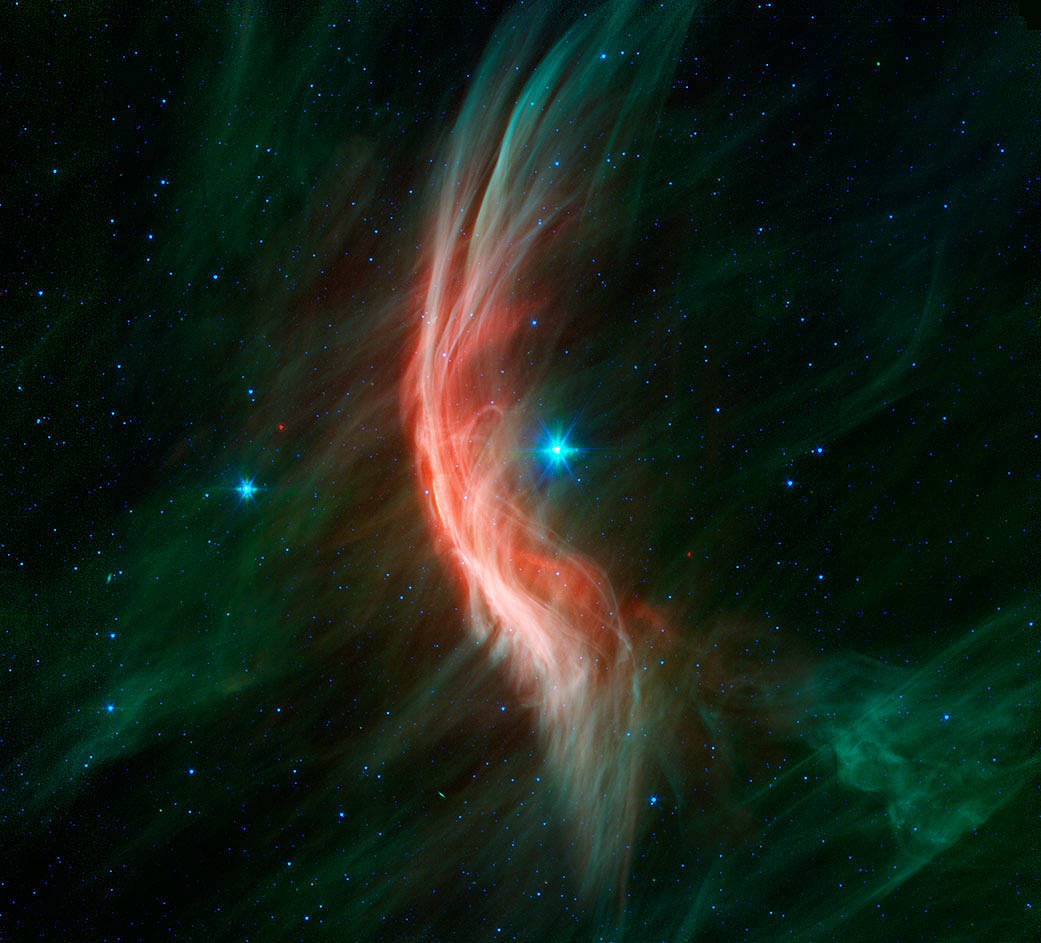Sixteen years ago, NASA launched its Spitzer Space Telescope into orbit around the Sun. Since the observatory launched on Aug. 25, 2003, it has been lifting the veil on the wonders of the cosmos, from our own solar system to faraway galaxies, using infrared light. Spitzer’s primary mission lasted five-and-a-half years and ended when it ran out of the liquid helium coolant necessary to operate two of its three instruments. But its passive-cooling design has allowed part of its third instrument to continue operating for more than 10 additional years. The mission is scheduled to end on Jan. 30, 2020.
This Spitzer image shows the giant star Zeta Ophiuchi and the bow shock, or shock wave, in front of it. Visible only in infrared light, the bow shock is created by winds that flow from the star, making ripples in the surrounding dust. Located roughly 370 light-years from Earth, Zeta Ophiuchi dwarfs our Sun: It is about six times hotter, eight times wider, 20 times more massive and about 80,000 times as bright. Even at its great distance, it would be one of the brightest stars in the sky were it not largely obscured by dust clouds.
Read more about this image here: https://www.jpl.nasa.gov/news/news.php?feature=3630
Image Credit: NASA/JPL-Caltech




























